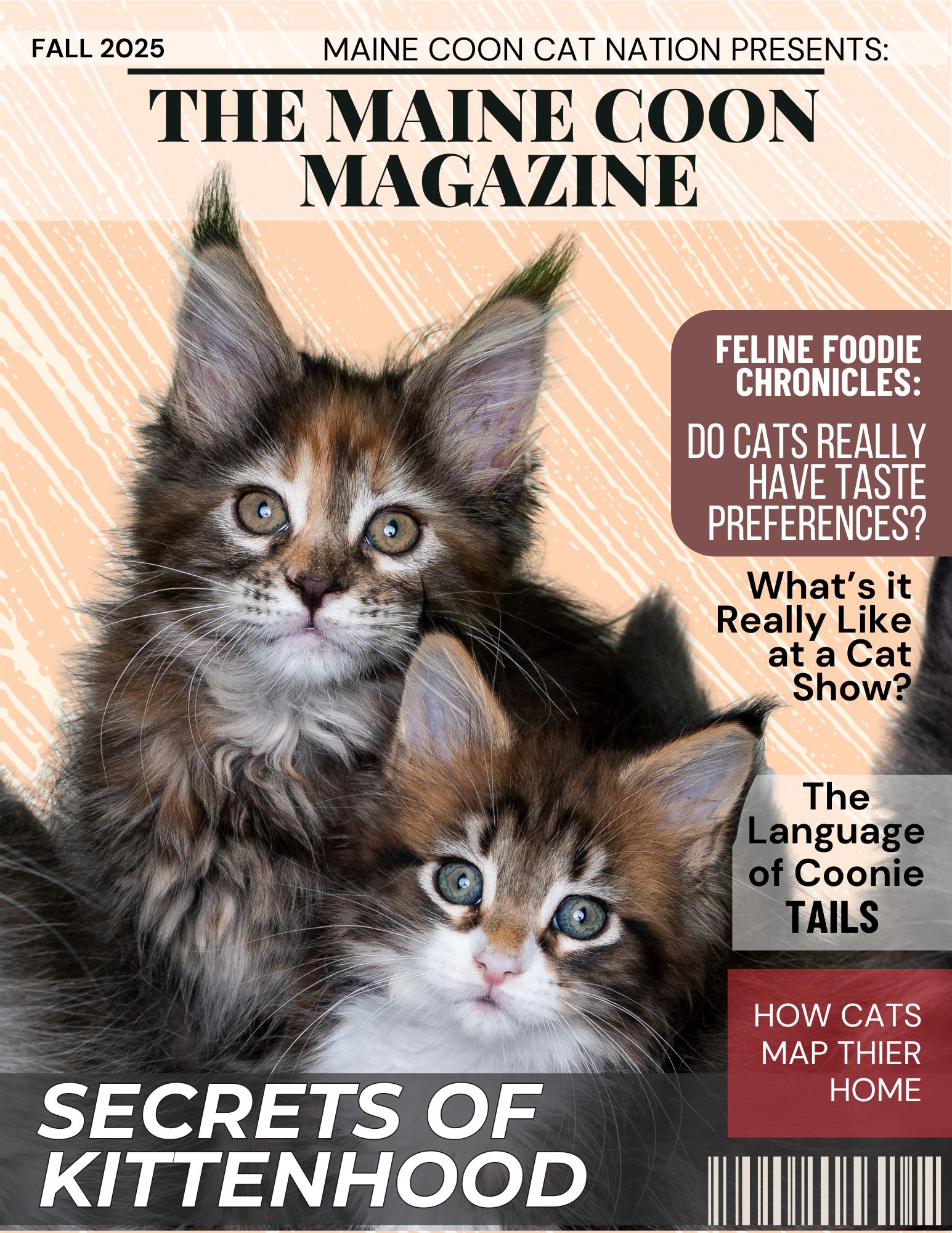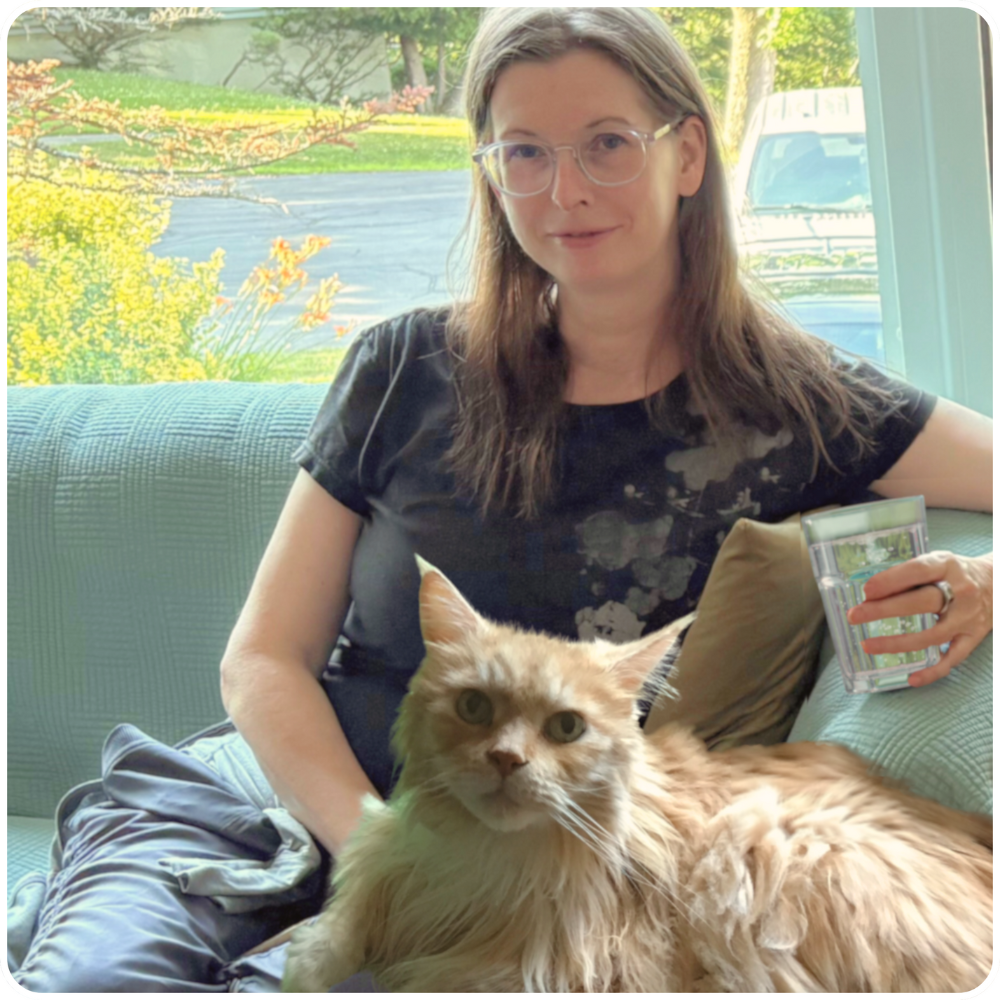- Home
- Maine Coon Personality
- The Famous Chirp
The Maine Coon Chirp Sound
A Voice All Their Own
If you've ever been "spoken to" by a Maine Coon, chances are you've heard the chirp - that light, chirpy sound that falls somewhere between a meow and a trill.
It's one of the most endearing parts of living with this breed, and it's more than just cute.
If you like this, you'll love our fun, free Daily Digest!

If you like this, you'll love our fun, free Daily Digest!

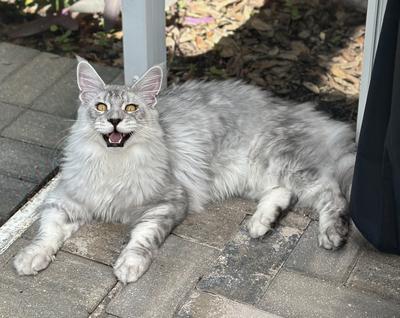 Simba, from our 2024 Albums
Simba, from our 2024 AlbumsCoonies are known for their expressive, musical voices, but they often use chirps instead of traditional meows.
While every cat is unique, chirping is a particularly breed-typical sound for Maine Coons. It's a famous aspect of their personality, and most often used as a form of social communication.
So what does it mean? Chirping is usually a greeting, a request, or an invitation to follow.
You might hear it when they want you to come look at something, when they spot you across the room, or when they’re excited to interact with you. It’s not demanding - it’s conversational.
Some owners describe their cat’s chirp as a polite way of saying "I’d like your attention, please." Others say their Coonie chirps to lead them from room to room or initiate play without vocal strain.
What Does The Maine Coon Chirp Sound Like?
The sound itself is usually short, high-pitched, and may end with a rising tone. It’s softer than a meow and often accompanied by eye contact, a tail flick, or a slow trot away - hoping you’ll follow.
It’s worth noting that Coonies also trill, a rolling sound that’s like a chirp blended with a purr. Trilling can signal affection or excitement - often when they’re rubbing against your leg or greeting you at the door.
But the chirp, specifically, is often more intentional - a directed form of communication, usually paired with some kind of action.
What’s really special? Many develop custom chirps that seem tailored to their humans.
When you respond - by following, speaking back, or engaging - you’re reinforcing that vocal exchange. Over time, you’re not just "talking to your cat" - you’re building a shared language.
What’s fascinating is how specific Maine Coon chirps can be. They don’t just chirp at random:
Many owners say their cat has a different chirp for asking for food, spotting something outside, greeting them after a nap, or leading them to another room.
This isn't just anecdotal. A 2003 study in the Journal of Comparative Psychology found that felines use intonation and repetition to differentiate requests and emotional states. [1]
These cats, with their naturally expressive natures, seem especially good at developing "custom" sounds for their people.
And here’s the fun part: your responses help shape these chirps. If your Coonie chirps and you follow, talk back, or reward them, you’re reinforcing that vocal pattern. Over time, you and your Coonie develop a shared language - a truly two-way communication.
So the next time you hear that bubbly little trill? It’s not just cute. It’s personal!
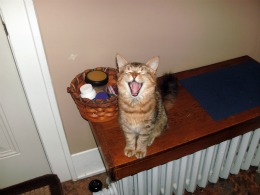
Community Chirps:
Come meet the Coonies in our community who can't resist a good chirp! In our photo albums, readers often say this quirky sound is one of their cat's signature moves.
If you're curious about the Maine Coon chirp, you're probably wondering - do they really make this sound a lot? When? Why?
There's no better way to understand a Coonie's quirks than to hear it straight from fellow Maine Coon parents, and our albums are full of them.
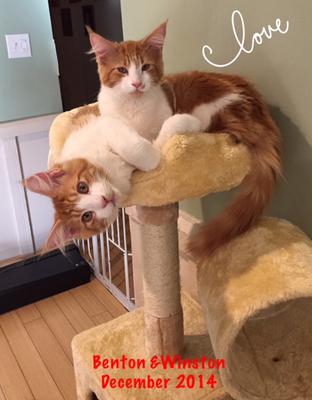 Benton and Winston
Benton and WinstonLaura P in Chesterfield, MO shares: "Benton and Winston are very social and always run to greet us at the door. They don't meow; they chirp, which is adorable!"
Kalli was so excited to see the snow! Mark C in Sligo, Ireland says: "Ireland doesn't get a lot of snow! Finally this January, we had two days of the white stuff and it amazed Kalli to see it!
First she was chirping at the snowflakes as the fell from the sky. Then finally we brought her outside to see what it was like!"
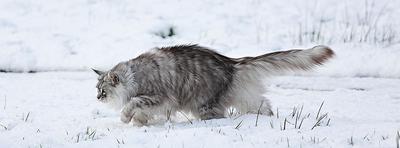
 Floyd
FloydFloyd's mom, Kathleen in Arizona says: "I smile every time he sounds off - does not meow like my other cat, rather he trills/chirps!
He also has an unusual fascination with water. As for personality, he is the most loving cat I've ever owned and still loves to hitch a ride on my shoulder"
 Stanley
StanleyRW in California says that Stanley " is a very happy cat and "chirps" a lot to show it. So far he has learned how to sit up, shake paws, and even knows how to retrieve a ball when thrown."
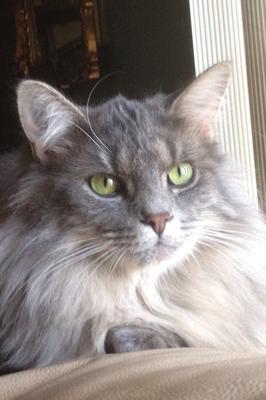 Prince
PrinceDarlene in Tazewell TN tells us of her boy, Prince: "He chirps all the time, and follows me ever step I take. He will get in bed with me and lay there and love on me and makes a funny sound like he is trying to talk to me."
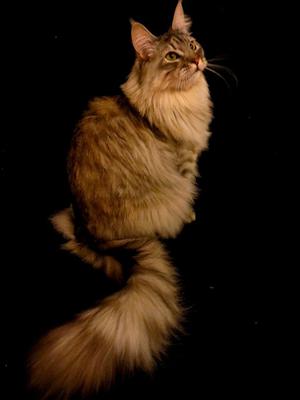
Taz is the epitome of a Maine Coon's social nature. His owner shares: "All about being cute, Taz trills, chirps and is very talkative. He demands attention so I am not surprised when he lands in my lap as I sit at the dinner table."
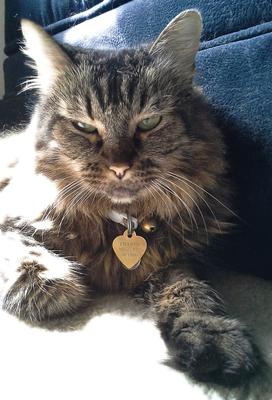
Andrea in San Antonio TX says: "Charly is a 10-year-old Maine Coon mix who has most of the beauty and all the wonderful personality quirks of a purebred Coonie.
..Charly is my sweet girl, who looks after me and talks to me with chirps and trills."

Julianne in Toronto, Ontario shares of her purebred girls Jessie and Molly: "They both have funny little chirps and tend to be on the vocal side - Jessie, just for conversations sake, while Molly likes to play fetch, and when she catches her ball, she walks it back to us meowing the entire time; it's the funniest thing!"
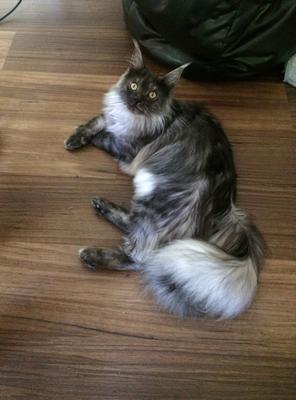
JoAnna in London, UK, shares just how vocal 9 month old Thor is!
"He is such a character and has such a funny chirp, he sometimes pads around the house chirping to himself, stops for a minute and then carries on again."
Then, at age 13.5 months Joanna tells us: "He is developing his voice more and more, I've never heard him meow but his chirpy chatter is getting louder and more frequent.
Particularly at 7am when he wants his breakfast - he pushes his nose right up to my face and starts his morning chatter."
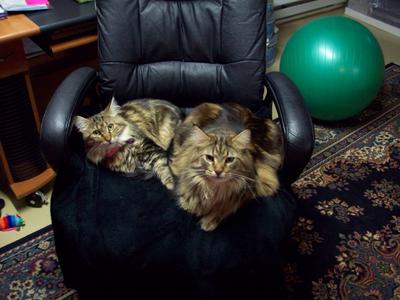
Eileen in Tonawanda, NY tells us about one of her favorite times with Mickey and Ellie:
"I like to come home and see their cute faces and have them Maine Coon "chirp" to say "hi" to us."
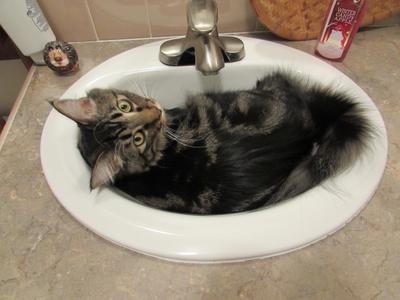
Analise in Lebanon, OR shares of her boy: "Bear is a mama's boy and loves his cuddles. I love his repertoire of chirps, warbles, and meows that he uses for different things."
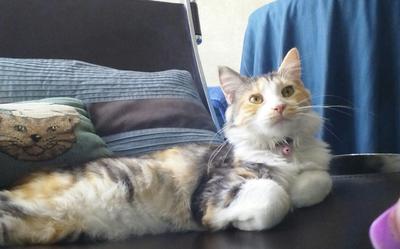
From Laura in Boardman, Ohio: "Cat and I hold real conversations. I ask her questions and she answers with a 'chirp'."
[1] Reference: Nicastro, N., & Owren, M. J. (2003). Classification of domestic cat (Felis catus) vocalizations by naive and experienced human listeners. Deleted Journal, 117(1), 44–52. https://doi.org/10.1037/0735-7036.117.1.44
